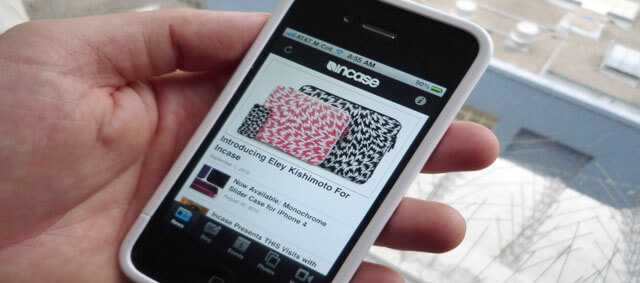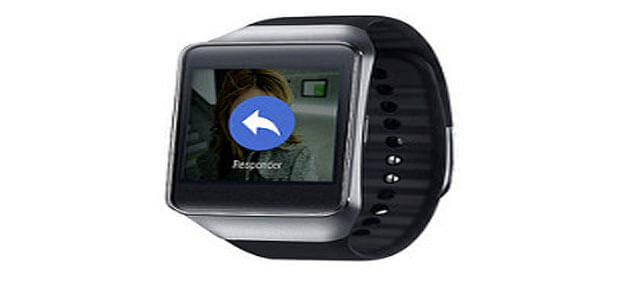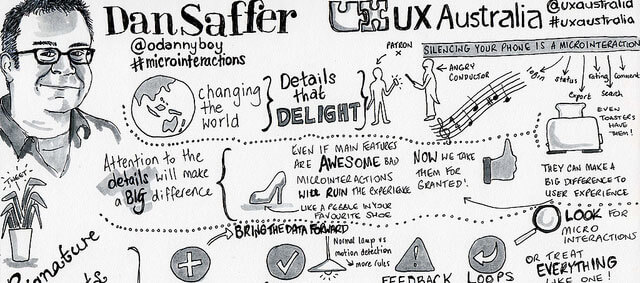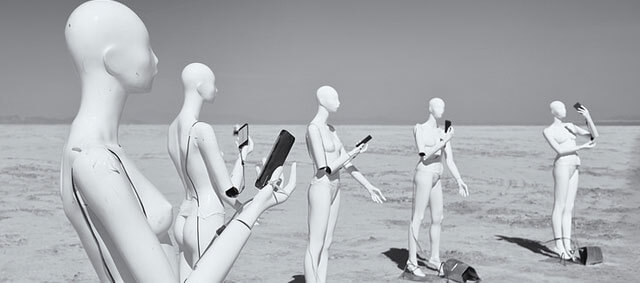What the UX? If you’re a Saas tech company ready to embark on developing a new website, app or device that is powerful, responsive, interactive and can keep up with user demands, then driving home the importance of UX design and its link to emerging technologies is a hissy fit or macho rant well worth having.
The UX Saas trends that define the tech space and beyond revolve around the rise of mobile, native apps, and smart technologies that offer responsive, personalised and adaptive user experiences. And they’re not going away.
The following examples offer an insight into these emerging trends, challenging tech companies to develop products that place the user squarely at its centre.
1. Mobile responsive UX design
As you reach for your mobile for the umpteenth time in a day, to check for something new, an email, a work task, a tweet, your heart-rate, the latest news, something to titillate or annihilate the doldrums of life, it’s a no-brainer to realise that the world has gone ‘mobile’.

Mobile devices have embedded themselves, more than anything else, into the inner-workings of our everyday lives, and with it also the need for every website to implement responsive design.
If a website doesn’t scale to mobile, tablet, mini-tablet, mini-mini-mini…and the list goes on, it reads as an insult. ‘What? You haven’t caught up with my busy life? You expect me to sit down, at a desktop, turn it on, and THEN find out more? And yes, as you twirl your mobile in your hand or twiddle on a tablet, it indeed reads like a joke.
Mobile usage has grown exponentially and with its so has user expectation; to be able to stand in a lift and project manage a team, to do your banking in cafe, to sit on a train and build a social media campaign, and to lie in bed and analyse the latest breaking news, tweet by tweet.
That’s what mobile’s all about. User-centric and situation focussed, with tech and social companies, in many cases, leading the way. Their focus on delivering platforms that can perform a function AND tickle our senses, means powerful responsive experiences must be central to their UX and UI strategy.
And yet let’s not get too comfy, as while having a responsive website is important, the rise and rise of native apps is also challenging the future of how everything online will be consumed.
2. App development
With the exponential growth of mobile and tablet usage, users are starting to preference native apps over mobile optimised sites. This again, as you scan the countless apps that litter your mobile screen, is because they provide a far better user experience.

While mobile-optimised websites merely mirror their desktop counterparts, apps have made the quantum leap, responding to the call of ‘context’ and placing user’s needs, not only in purpose, but also place and time, at its centre.
Features like push notifications, instant reminders, offline functionality, queuing, gps tracking, automatic updates and the list goes on, provide a level of interaction and intuitiveness that make apps a dynamic right-hand buddy. They are invested in your life in an entirely new way, gathering personal data, monitoring physical movements, and providing appropriate content for every unique situation.
The fluidity of how you use them, on the move, in any situation, also opens up a whole new world of of ideas around how technology and online can merge…and does it even need to be delivered in a rectangular hard case?
3. Wearable devices
Wearable devices are the logical next step, and businesses are already starting to think creatively about ways we can use app extensions to integrate technology further into our daily lives.

The Android Wear watch is a good example of this. It provides ‘information that moves with you’, where context is everything. If you’re on the bus, it can suggest where to get off. Hopping off and walking through town, it can offer suggestions for lunch, shopping, museums, and the list goes on. Heading to the beach and going for a swim, it can warn you of the dangers of a surf spot and come up with a list of safe alternative beaches. For a whole myriad of other activities, your watch is no-longer beholden to simply telling you the time. It is now your guide, your expert and soothsayer, getting you where you want to go, on time, calm and collected, and with the knowledge you’re in good hands.
The Polo-tech shirt is another example. Traditionally a clothing retailer, Polo has leapt into the world of technology and delivered a new shirt, woven with threads of silver, that can measure your heart-rate, breathing, balance and send this information to your smartphone for ongoing analysis.
What these examples are showing is that the function of any item itself is now up for grabs. A shirt is no-longer just a shirt but a portable tracking, monitoring, listening and communication device that looks after your health and wellbeing. And there are other functions available, think portable doctor giving advice from the lapel of your shirt, the sky really is the limit and it’s up to tech businesses in particular to cast ahead and catch the next wave of opportunity.
The potential for cross-over is enormous and traditional industries, such as retail, will increasingly be on the lookout for new technologies to give them the edge; to insert logic and personality into their products, and this is where Saas companies come in.
Now more than ever, software companies and UX designers have the potential not only to define the way we do things, but also control the way we see, use and experience things.
Think of the countless everyday items waiting to be snapped up, spun 360, and turned into multi-functional products that could change our everyday lives.
4. Mico-interactions
“The difference between a product you love and a product you tolerate is often the micro-interactions you have with it.”
Micro-interactions are small contained product moments that revolve around one main task. When you ‘login’ to an account, ‘like’ something on facebook, sync your data to devices, set an alarm, turn a feature on or off, these are all micro-interactions, and they extend from apps on our phones to desktops, household appliances and the structural environments we live in.

So small you don’t even notice them, micro-interactions are what all modern user interfaces should be built around. An intricate web of small, minute interactions that allow you to perform tasks with ease and regularity, almost without thinking.
And as the web expands and wearable technologies become more popular, micro-interactions also increasingly becoming more important. Where our relationship with technology feels fluid, effortless, logical, predictive and in many ways symbiotic. Software services that understand this will lead the way in user experience and the long-term use of their product.
Understanding the way micro-interactions define our user-experience, also lays ground for analysing how we can predict micro-interactions and automate them into our daily lives.
Think a device that can login, sync, turn on and off, and many other tasks, simply by predicting a small movement in your hand, or the time of day you usually do this, or what you’ve done before and are likely to do next, or the measure of your heart-rate, the tone of your voice, the words you read in a message…and let’s not even think about brain waves.
It’s an intriguing space that will only grow and place more demands on Saas driven businesses to think big and turn this into small, intuitive micro-interactions.
5. Specialise and personalise

Suddenly the mother-ship doesn’t seem like the best place to be with all those light-weight apps flying around.
Apps that offer a huge range of features and functions often can be too complex to use and may not perfectly satisfy the task a person is trying to undertake.
With so much on offer, users now only have time for apps that will perfectly match what they are looking for. This has put pressure on industries, from healthcare to accounting, to find specialised Saas solutions more tailored to the specific needs of their users.
The challenge of this kind of specialisation, initially, is that customers will be required to jump headfirst into more complex, finely-tuned experiences. However, the benefit of specialised Saas is that “companies will have a built-in user-base which gives them a head start when developing features. It also benefits enterprise customers.”
This gives tech companies the opportunity to build products primarily through user-led design, with the ability to stay agile and ‘tweak and release’ software updates continually according to the ever-evolving needs and feedback of their customers.
A perfect situation for a lean start-up, where the end goal is never for perfection but more for the ability to keep developing and releasing to stay relevant in the modern online world.
Ride the perfect storm in
With the world gone mobile, it’s truly a perfect storm of new ideas, technologies and softwares shaking up the way we do, see and experience things, and now has never been a better time for Saas tech companies to ride the wave of change and develop websites, apps, and new innovative products that offer customisation, personalisation, and integration into the very fabric of people’s everday lives.
So when you’re planning your next Saas marketing or product developmentor strategy, make sure you kick up a memorable UX tech stink. It’s a fit well worth having. Channel Steve Jobs, only nicer, and without the black sweater. This will help shift your own products from the ordinary to the extraodinary and into entirely new and life-changing categories of use. And most importantly they won’t be boring, a most crucial and often overlooked point.





